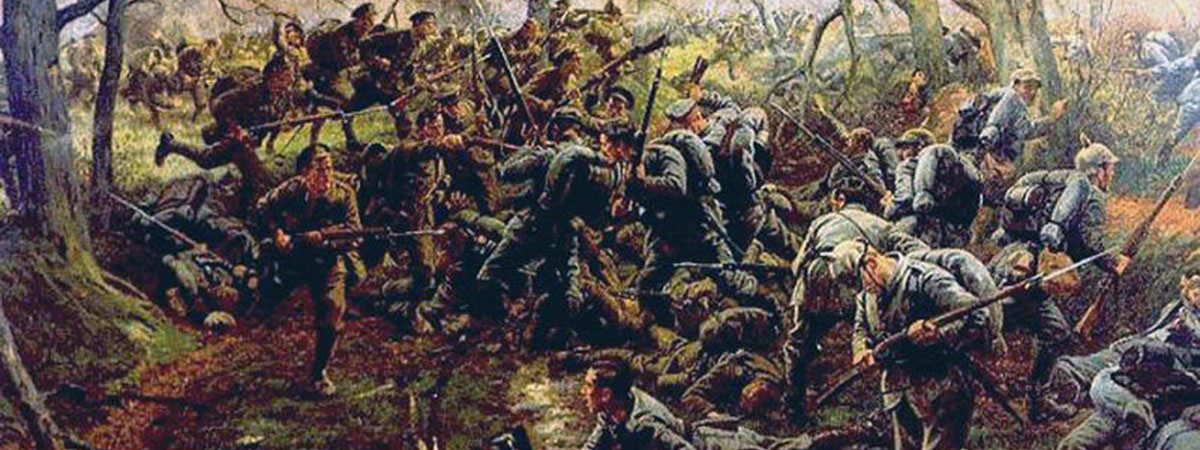Fought between July 28, 1914 and November 11, 1918, World War I was a global conflict between the Central Powers of Germany, Austria-Hungary, the Ottoman Empire and Bulgaria; and the Allies which was a coalition of many nations, most prominently the Great Britain, France, Russia, Japan and Italy. The Western Front was the main theater of the First World War. It was a 400-plus mile stretch of land weaving through France and Belgium from the Swiss border to the North Sea. As war broke out, Germany planned on ending the French threat in a quick decisive defeat. Though their initial plans were successful with the invasion of Luxembourg and Belgium, the Allies defeated them at the First Battle of Marne ending their hope of a quick decisive victory. This was followed by a long stalemate on the Western Front which saw trench warfare and battles of attrition. This stalemate was at last broken in the last year of the war with the 100 Days Offensive of the Allies, which would ultimately end the war. Here are the major battles and events of World War I on the Western Front including their dates, places and nations involved.
German Invasion of Luxembourg
Date: August 2, 1914
As WW1 broke out in Europe, Germany put into action their Schlieffen Plan, which aimed at ending the French threat in a quick decisive conflict so that forces could be transferred quickly to the eastern front to combat the much larger Russian army. Germany planned to move quickly through neutral Belgium to attack France, and then turn southwards to encircle the French Army and trap it on the German border. As a first step, Germany invaded neutral Luxembourg who offered little resistance. From August 1914 until the end of World War I on November 11, 1918, Luxembourg was under full occupation of the German Empire.
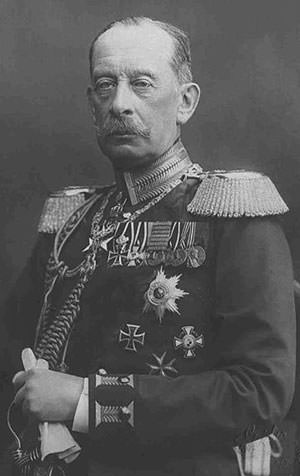
German Invasion of Belgium
Date: August 4 – October 31, 1914
Proceeding as per their plan, the Germans invaded neutral Belgium, after the Belgian Government refused passage of German troops through their country. Liege fell on the 7th August with the last forts being surrendered. The government abandoned their capital, Brussels, by August 17. By November, most of Belgium was under German control, a situation that would last the length of the war.
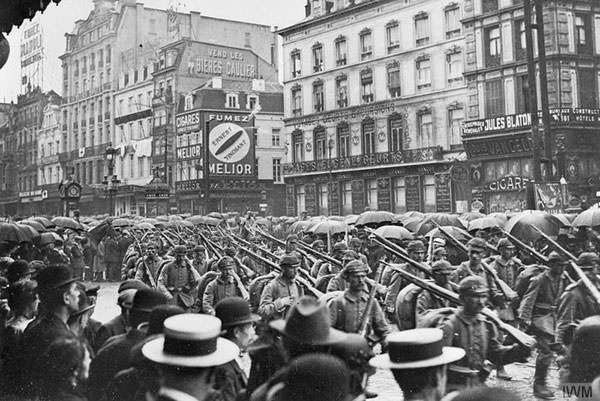
Battle of the Frontiers
Date: August 7 – September 6, 1914
The initial engagement among the major European powers in World War I, the Battle of Frontiers resolved around the strategies of French Chief of Staff General Joseph Joffre (Plan XVII) and the German Aufmarsch II (Variation of Schlieffen Plan) deployment plan by Helmuth von Moltke the Younger. The French offensive with the First and Second Armies was defeated in a few days in Alsace and Lorraine. The offensive of the Third and Fourth Armies was defeated from 21 to 23 August. The Fifth Army was then defeated on the Sambre forcing a retreat. The British Expeditionary Force fought the Battle of Mons on August 24 and it was also forced by the Germans to retreat.
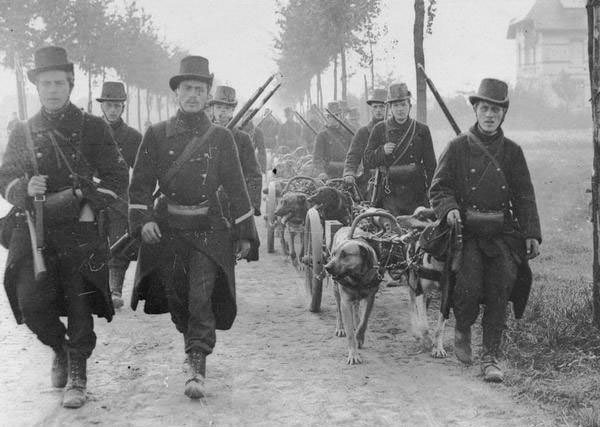
First Battle of Marne
Date: September 6 – 12, 1914
Following the great retreat to the Marne, the French and British forces launched a counter-attack in the First Battle of Marne, to stop the invading German forces. The battle was a success for the Allies as the Imperial German Army was forced to retreat towards the Aisne.
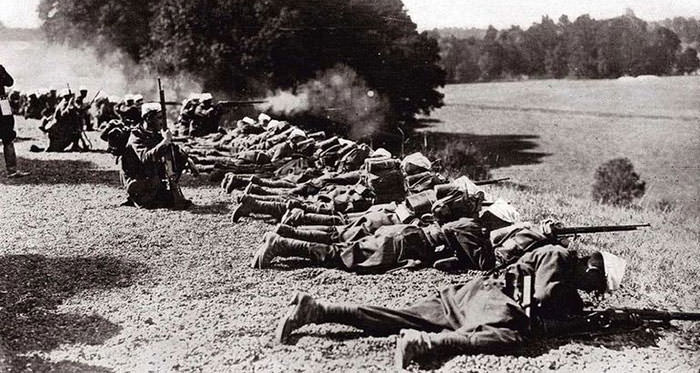
First Battle of the Aisne
Date: September 13 – 28, 1914
A follow up offensive was launched by the Allies as the German First and Second Armies retreated after the battle at Marne. The First Battle of the Aisne marked the beginning of trench warfare and a stalemate on the western front that would continue up till the penultimate phases of WW1 in 1918.
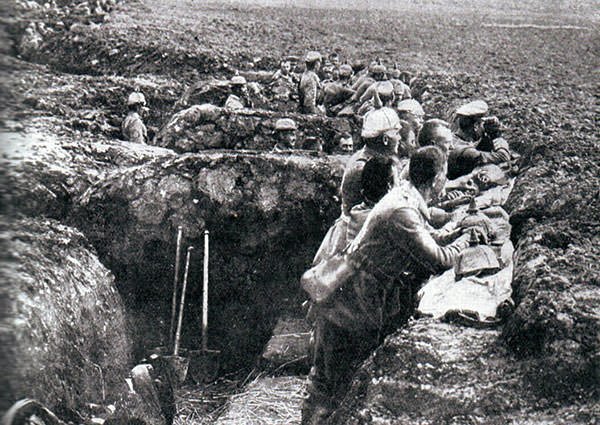
Race to the Sea
Date: September 17 – October 19, 1914
An impasse was reached which soon turned into a stalemate on the Western Front. With neither side able to advance nor in a position to retreat, both sides began to dig trenches. For a three-week period following the unexpected development of trench warfare, both sides gave up frontal assaults and began trying to envelop each other’s northern flank. This “Race to the Sea” ended on the North Sea coast of Belgium around October 19, when the last open area from Dixmude to the North Sea was occupied by Belgian troops, who were retracting after the fall of the Belgian city Antwerp.
First Battle of Ypres
Date: October 19 – November 22, 1914
The First Battle of Ypres ended the “Race to the Sea” and that of mobile warfare on the Western Front. Ypres was the last obstacle between the Germans and the key Channel ports of Calais and Boulogne-sur-Mer. For over a month, fierce fighting ensued but the Allies were able to hold Ypres and with the arrival of heavy rain followed by snow, German Chief of Staff Von Falkenhayn called off the attack.

First Battle of Champagne
Date: December 20, 1914 – March 17, 1915
French Commander Joseph Joffre planned the first major offensive after trench warfare for a quick and decisive victory. The idea was to attack the Noyon Salient, which ran from Switzerland to the North Sea. The French Fourth Army engaged with the German Third Army and the numerical advantage enjoyed by the French resulted in a few gains in territory. The Germans were however well entrenched in their defense and their counterattacks forced the French to call off the attack.
Second Battle of Ypres
Date: April 22 – May 25, 1915
Germans shocked the Allied soldiers by firing 150 tons of lethal chlorine gas against two French colonial divisions at Ypres in Belgium. Carried out on 22nd April, this was the first large scale use of poison gas in World War I. The engagements continued for over a month with the Germans failing to take the advantage and the Allies managing to hold on to most of their positions. Gas attacks to break the deadlock of trench warfare would continue in WW1. This, in turn, would lead to the production of gas masks and protective clothing to negate their effect.
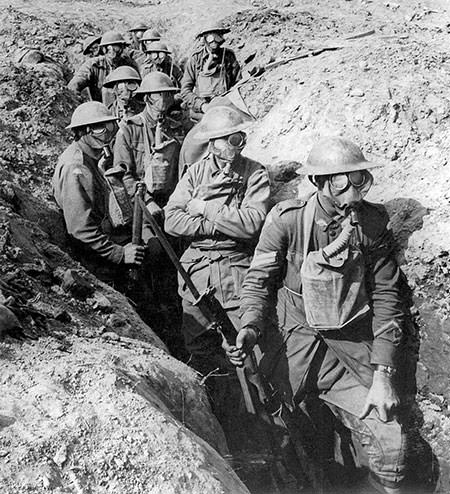
Champagne Loos Artois Offensive
Date: September 15 – November 4, 1915
French Commander-in-Chief Joseph Joffre planned a series of attack against the Central Powers as an effort to exploit the numerical superiority of the Allied forces over the Germans. Joffre’s Champagne Loos Artois Offensive involved coordinated attacks. The French Tenth Army attacked the German Sixth in the Third Battle of Artois; the British First Army launched their own big offensive in the Battle of Loos; while the French Second and Fourth armies attacked Champagne. The attacks were contained by the Germans and they were able to take lost ground in counter offensives. The allies suffered twice as many casualties numbering more than 300,000 with most German casualties coming in counter attacks. With these battles, it become apparent that the deadlock on the western front would be difficult to break.

Battle of Verdun
Date: February 21 – December 18, 1916
With the aim of bleeding the French Army in a battle of attrition, the Germans under Erick Von Falkenhayn launched a major offensive attacking the fortresses at Verdun. The next ten months witness the longest battle of WW1 with fierce fighting and enormous casualties. The Germans had the initiative in its initial stages, taking strategic forts of Douaumont, Vaux and Thiaumont by June but, as the allies launched a fresh offensive at Somme, the tide turned. In autumn of 1916, French launched a counteroffensive and were able to reclaim most of what they had lost by December. The casualty count was 700,000 to 1,000,000 counting both sides, making it one of the bloodiest battles of WW1.
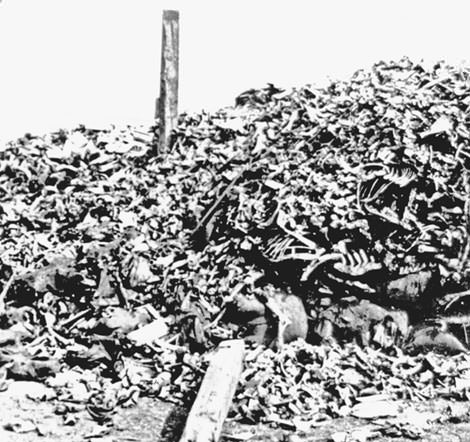
Battle of Somme
Date: July 1 – November 18, 1916
The largest and the bloodiest battle on the western front began near the Somme River in France, as the Allies under British Commander Douglas Haig attacked the German defense lines on July 1, 1916. The Allies were however unable to achieve the quick breakthrough they intended and Somme turned into a battle of attrition. Over the next four and a half months, 3 million men would fight the battle; and more than one million men from all sides would be killed, wounded or captured. The battle ended in a stalemate with the Allies gaining a few miles.
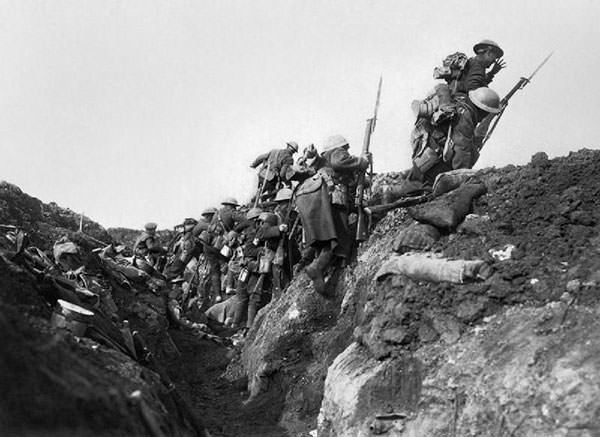
Second Battle of Arras
Date: April 9 – May 17, 1917
The British launched their part of the Allied Spring offensive (Nivelle Offensive) near the French city of Arras. The Canadian Corps took Vimy Ridge, the Third Army advanced astride the Scrape River and the Fifth Army attacked the Hindenburg line. By 17th May, the British forces held new positions but were unable to achieve the intended breakthrough. Casualties were high. More than 150,000 for the British and approximately 130,000 for the Germans.
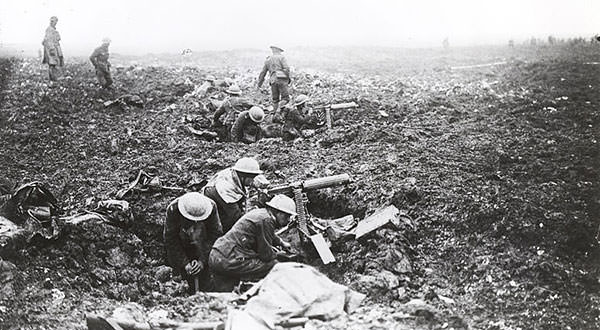
Second Battle of Aisne
Date: April 16 – May 9, 1917
Under the leadership of newly appointed Commander in Chief Robert Nivelle, the French launched the main action of the Nivelle Offensive at the Second Battle of Aisne. The assault was a major disaster for the French who have committed 800,000 men to the battle and were unable to achieve any breakthrough. The French lost 187,000 to casualties while the Germans lost 163,000. Robert Nivelle was replaced by Philippe Pétain after the failed offensive.
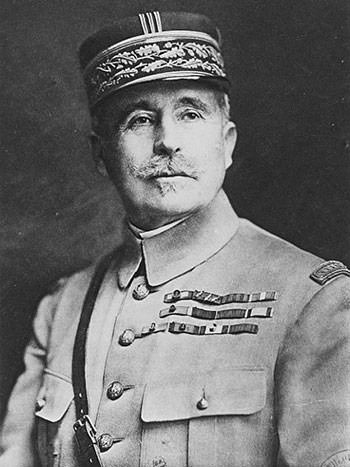
Battle of Passchendaele
Date: July 31 – November 10, 1917
The British under Commander in Chief Douglas Haig, took the initiative again and launched another major assault on the German lines. The Battle of Passchendaele, also called Third Ypres, was an aggressive assault aimed at destroying German submarine bases located on the north coast of Belgium. On 31st July, the British Fifth Army and 6 French divisions advanced on the German lines near the Belgian village of Passchendaele. Initial Allied attacks faileddue to over ambitious plans and off season rains but progress was made when battles resumed in drier conditions of September. British were able to establish control over the ridge of land east of Ypres and later the Passchendaele ridge in November. However, the vital railway still lay five miles away when the offensive was called off. Though Haig claimed victory, there was no strategic gain. Moreover, there are heavy casualties, approximated between 250,000 and 400,000 on both sides.
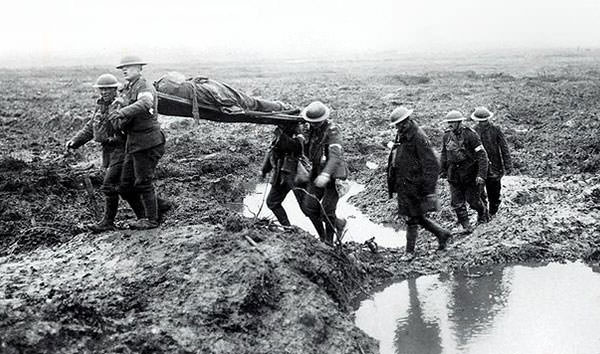
Battle of Cambria
Date: November 20 – December 7, 1917
In November 1917, the British launched an offensive to capture the town of Cambrai, an important supply point for the German Siegfriedstellung (Hindenburg Line). The battle was remembered for the first successful use of battle tanks (Mark IV) on its first day. The Germans soon launched a counter attack and reclaimed lost ground leading to a stalemate with close to 45,000 casualties on both sides.
Spring Offensive – Operation Michael
Date: March 21 – April 5, 1918, Second Battle of the Somme
With Russia bowing out of the war and American troops to arrive soon, Germany launched a series of offensives beginning with Operation Michael on the western front. The idea was to swiftly conclude the war while it was still possible. The Operation began on March 21, 1918 with the intent to strike the British Expeditionary Force (BEF) along the Somme and cut it off from the French to the south. The British retreated but the objective was not achieved. The speed of the advance of German Stormtroopers became their undoing, as supply lines were stretched and became vulnerable. The operation saw close to 250,000 casualties on either side.
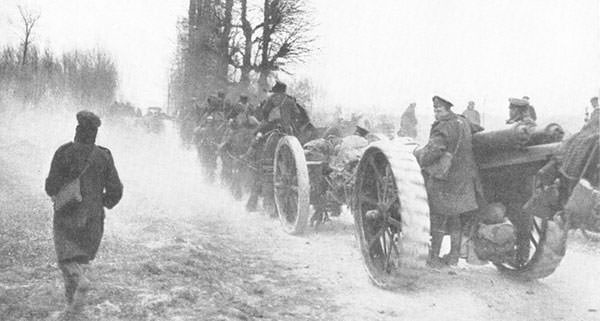
Spring Offensive – Operation Georgette
Date: April 9 – 29, 1918, Battle of Lys
As Operation Michael came to an end in early April without providing the desired results, the Germans reassessed their losses. Operation George was beyond their means now and a scaled down Operation Georgette was launched shortly with the objective of capturing Ypres; and forcing the British forces back to the channel ports and out of the war. There was early success at Neuve Chapelle and by April 11, the Germans advanced five miles on a front 30 miles wide. The British were under tremendous pressure giving up the Passchedaele Ridge to fall back on the Ypres. Towards the end of April, the Allied reinforcements were arriving. This forced the Germans to call off the operation on 29th April after they took Scherpenberg Heights.
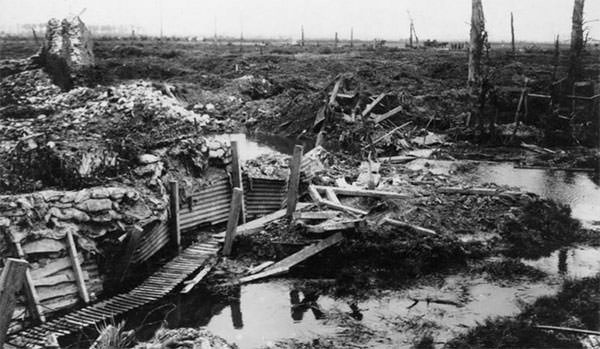
Spring Offensive – Operation Blücher-Yorck
Date: May 27 – June 6, 1918, Third Battle of the Aisne
The third phase of the German offensive began with Operation Blücher-Yorck with the focus on capturing the Chemin des Dames Ridge. The Germans believed that success at the Aisne would lead the German armies to within striking distance of Paris. The German armies advanced 55 km smashing through eight Allied divisions and pushing the Allies back to Vesle River. By 30th May, victory seemed near but the German armies had suffered tremendous casualties, were without supplies and exhausted. After Allied counterattacks, the German advance was finally halted on the Marne.
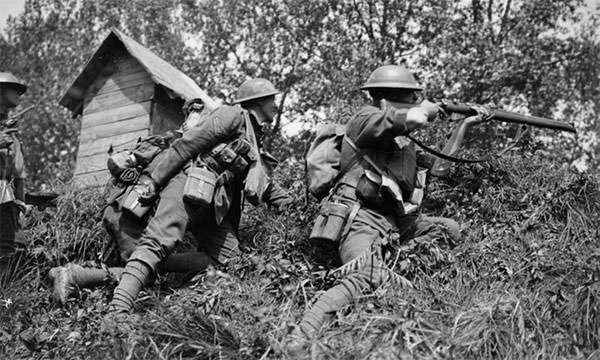
Spring Offensive – Operation Gneisenau
Date: June 9 – 12, 1918, Battle of Matz
In an effort to link the gains from Michael and Blücher-Yorck, the Germans launched Operation Gneisenau. The French were however warned of the attack and were deep in defense when the artillery bombardment began on 9th June. The Germans managed to advance 14 km despite Allied resistance but the French counter-attack on June 11 at Compiègne, caught the Germans by surprise and the operation was called off the next day.
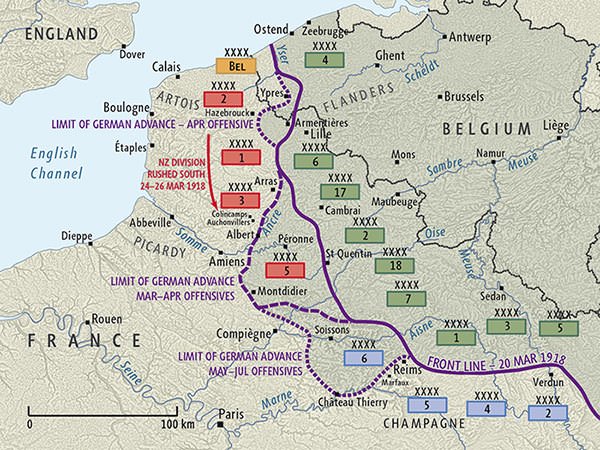
Second Battle of Marne
Date: July 15 – August 6, 1918
The last major German offensive began on the Western Front on 15th July. Convinced that the best route to a German victory lay in an attack through Flanders in northern France and Belgium, General Ludendorff launched a diversionary attack at the Marne. Anticipating the attack, the French under Commander Philippe Petain had set up a line of empty trenches, and their front line of defense was almost untouched by German artillery. This successful strategy meant that as the Germans advanced they were met with a fierce barrage of French and American fire. The Germans suffered heavy casualties and the battle was lost for them as the Allies counterattacked a few days later.
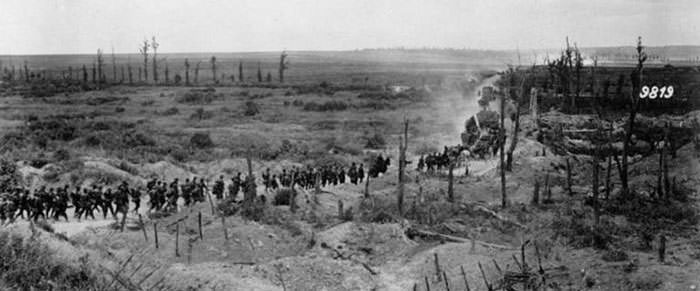
100 Days Offensive
Date: August 8 – November 11, 1918
By the summer of 1918, German attacks in the war had halted. Beginning with the Allied attack on August 8, 1918 in the Battle of Amiens, the spent out German forces suffered a series of defeats which would finally end the First World War. A series of coordinated attacks were launched by the Allies on the Germans, pushing them first to the line of the Somme and then to the Hindenburg line by 2nd September, 1918. The Siegfried Line or the Hindenburg line was designed as an impregnable defense against advancing enemy forces, and its breach in September-October of 1918 was the final blow to the Germans. Throughout October, Germany retreated through territory gained in 1914 and it finally surrendered on November 11.

